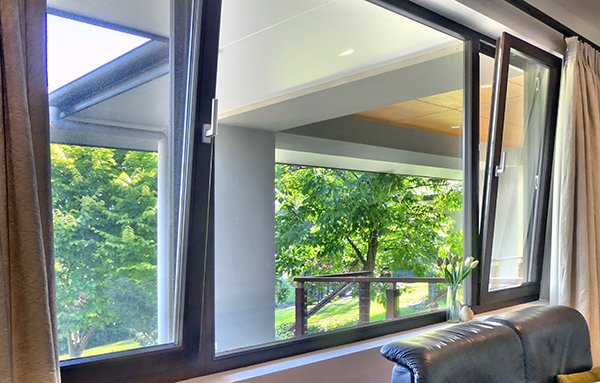Tilt & turn windows are a type of window that can be opened in two different ways: tilting inwards from the top or swinging open like a casement window. This versatility gives them unique functionality and benefits.
Here's how the two opening modes of tilt & turn windows work:
Tilt mode: In the tilt mode, the window sash tilts inwards from the top. This allows for secure ventilation while maintaining a level of security. The tilt position allows fresh air to enter the room while restricting access from the outside, making it a suitable option for situations where you want to let in fresh air but still want to ensure safety or prevent unauthorized entry. The tilt position also facilitates easy cleaning of the exterior glass from inside the building.
Turn mode: In the turn mode, the window sash swings open inward like a casement window, allowing for maximum ventilation and egress. When fully opened, the window provides a large opening, allowing ample airflow and the ability to exit through the window in case of emergencies.
The benefits of tilt & turn windows include:
Versatility: Tilt & turn windows offer flexibility in terms of ventilation options. You can choose to have the window tilted slightly for controlled airflow or fully opened for maximum ventilation. This versatility allows you to adjust the window according to your specific needs and weather conditions.
Security: When the window is in the tilt mode, it provides ventilation without compromising security. The window remains locked in place, preventing unauthorized access from the outside. This is particularly beneficial for ground-floor windows or when you want to leave the window open for fresh air while maintaining a level of security.
Energy efficiency: Tilt & turn windows provide excellent insulation when closed, contributing to energy efficiency by reducing heat loss and improving thermal performance. The tight seal when the window is closed helps to prevent drafts and enhance the overall energy efficiency of the
